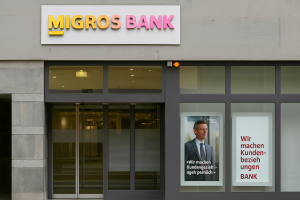Business
By: Or Sushan
Date: April 24, 2025
With the rise of digital banking, managing your money has become more convenient than ever. However, this convenience comes with risks that can threaten your financial security. Cybercriminals are constantly seeking new ways to access your accounts and steal your money. Phishing scams, identity theft, malware attacks, and unsecured Wi-Fi networks are just a few of the dangers you face when banking online. Understanding these risks is the first step in protecting your money effectively.
One of the simplest yet most powerful ways to safeguard your accounts is to use strong, unique passwords. Avoid common words, birthdays, or simple sequences that hackers can easily guess. Instead, create passwords that include a mix of upper and lower case letters, numbers, and symbols. Using a password manager can help you keep track of complicated passwords without hassle.
Additionally, enable multi-factor authentication (MFA) on all your banking apps and websites. MFA adds an extra layer of security by requiring a second form of verification—like a text message code or biometric recognition—before granting access. This step significantly lowers the chances of unauthorized users entering your accounts, even if they acquire your password.
Your computer, smartphone, and banking applications receive regular updates that patch security weaknesses. Ignoring these updates leaves your devices vulnerable to hackers who exploit outdated software. Always ensure your operating system, browsers, antivirus programs, and banking apps are up to date. Turn on automatic updates where possible to make sure you don’t miss critical security patches.
Phishing remains one of the most common tactics criminals use to trick you into revealing your banking details. These scams often arrive as emails, text messages, or fake websites that look like legitimate banks. To avoid falling victim:
Public Wi-Fi networks, such as those in cafes or airports, are often unsecured and can be hotspots for hackers looking to intercept your data. When accessing your bank account online, always use a secure network, preferably your home’s private Wi-Fi or a trusted cellular connection.
If you must use public Wi-Fi, consider using a reputable Virtual Private Network (VPN). A VPN encrypts your internet traffic, making it difficult for cybercriminals to access your sensitive information.
Keeping an eye on your bank activity can help you spot problems early before they escalate. Make it a habit to check your transaction history frequently, either daily or weekly, to ensure all activity is legitimate. Many banks offer customized alerts that notify you of unusual transactions, such as large withdrawals or foreign purchases. Set these alerts up to stay informed instantly.
Financial technology is evolving rapidly, so staying informed about the latest security threats and prevention methods is vital. Follow your bank’s blog or social media for tips and announcements on new security features and scams to watch out for. You can also find helpful resources on government and cybersecurity websites that offer guidance tailored to digital banking users.
In case of account lockouts or data loss, having copies of essential financial documents can save you time and stress. Store digital backups securely using encrypted cloud storage services or external hard drives kept in safe places. Make sure your backups include account statements, tax forms, and contact information for your bank.
Be cautious about what banking details you share on social media or unsecured platforms. Information like your account number, login credentials, or personal identification information can be exploited by hackers. When interacting online, keep financial conversations private and avoid posting sensitive information.
Most banks offer security tools designed to protect your money. These may include temporary card locks, biometric authentication, transaction limits, and device recognition features. Explore your bank’s app or website to activate all available security controls that fit your needs. Taking advantage of these built-in protections can greatly reduce the risk of fraud.
By embracing these strategies, you can guard your money while enjoying the benefits of digital banking. Staying vigilant, proactive, and informed empowers you to navigate the digital financial landscape safely and confidently.
As more people turn to online banking, understanding the risks is essential to keeping your money safe. Digital banking threats are varied and constantly evolving, but some are far more common than others. Being aware of these dangers is the first step toward protecting your finances in this technology-driven world.
One of the biggest risks comes from phishing scams. These crafty attacks use fake emails, texts, or websites that look like they belong to your bank to trick you into sharing login details or personal data. Once scammers have this information, they can access your accounts and steal your money.
Malware is another significant concern. These malicious programs can infect your device through downloads, suspicious links, or unsecured networks. Malware can record your keystrokes, capture passwords, and even secretly transfer money without your knowledge.
Weak or reused passwords also leave you vulnerable. Many users rely on simple passwords or use the same ones across multiple platforms, making it easier for hackers to gain access to multiple accounts once one is compromised.
Public Wi-Fi networks, though convenient, can expose your banking information to cybercriminals if you use them without extra security measures. Since these networks are often unencrypted, attackers can intercept your data during transmission.
Understanding how these threats operate allows you to take steps to avoid them. Here are several strategies you can use to strengthen your defenses when banking digitally:
Always choose passwords with a combination of uppercase and lowercase letters, numbers, and symbols. Avoid using easily guessable details like birthdays or names. For even better protection, use a reputable password manager to generate and store complex passwords securely. This prevents password reuse across sites, reducing your overall risk.
Most digital banks offer two-factor authentication, requiring you to verify your identity through a second method, such as receiving a code via SMS or using an authenticator app. This extra step makes it much harder for hackers to break into your account even if they have your password.
Always double-check when you receive emails or texts claiming to be from your bank. Never click on links or download attachments without confirming their authenticity. When in doubt, open a new browser window and type your bank’s official web address manually.
Software updates often include security patches that protect against the latest threats. Make sure your phone, computer, and banking apps are regularly updated to minimize vulnerabilities.
Avoid logging into your bank account over public Wi-Fi. If you absolutely must use a public network, rely on a trusted Virtual Private Network (VPN) service. VPNs encrypt your internet traffic and hide your IP address, making it much more difficult for attackers to intercept your data.
Even with strong protection, it’s vital to keep an eye on your bank transactions regularly. Set up account alerts if your bank offers them—this way, you are immediately notified of any unusual activity.
If you notice suspicious transactions or believe your account has been compromised, contact your bank immediately. Fast response can prevent or limit losses and help secure your accounts.
Every digital bank comes with its security policies and tools. Familiarizing yourself with these can provide valuable insights into how your money is protected and how you can contribute to that safety.
Protecting your finances in the digital age requires being vigilant and proactive. Stick to the recommended security practices, stay informed about new threats, and treat your banking app with the same caution you’d give to physical cash or credit cards. Developing these habits will keep your money more secure and give you peace of mind when managing your finances online.
Protecting your money in the age of digital banking requires a blend of vigilance, smart habits, and up-to-date knowledge. By using strong passwords, enabling two-factor authentication, and regularly monitoring your accounts, you create a solid defense against fraud and theft. Understanding common threats like phishing scams, malware, and unauthorized access empowers you to recognize danger early and avoid costly mistakes.
Remember, digital banking offers convenience but also carries risks that can affect your financial security. Staying informed about the latest scams and practicing safe online behavior will help you keep your money safe. Always be cautious about the information you share and the links you click. Use trusted devices and secure networks to access your accounts, and update your software regularly to defend against vulnerabilities.
By combining these effective strategies with a clear understanding of digital banking threats, you hold the key to protecting your finances in today’s connected world. Your money’s safety depends largely on the actions you take every day. Stay alert, stay informed, and you can confidently navigate digital banking without fear. This proactive approach not only safeguards your money but also gives you peace of mind, making the most of the digital banking era’s advantages.




